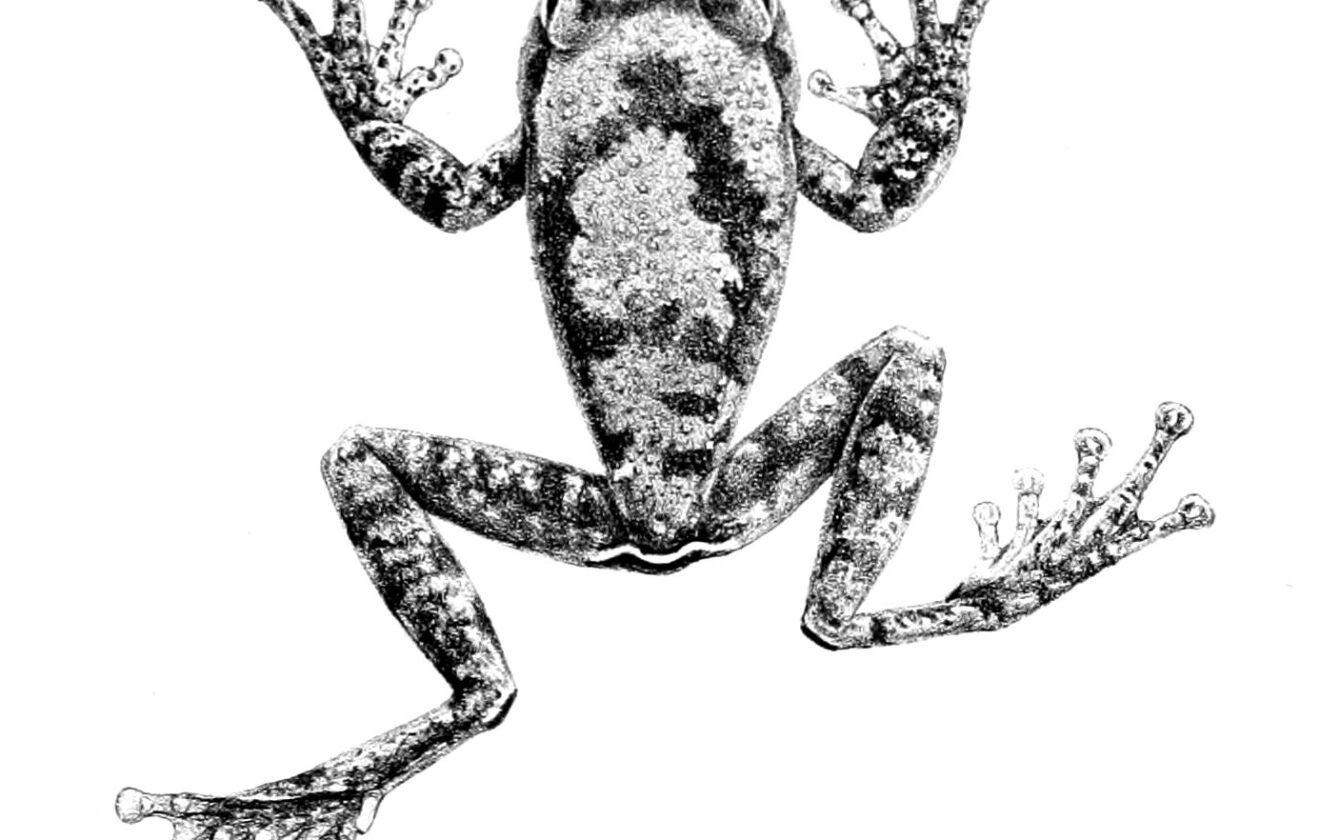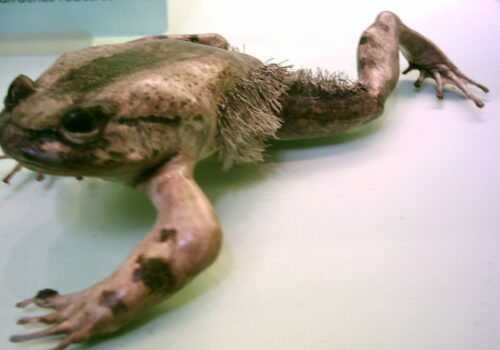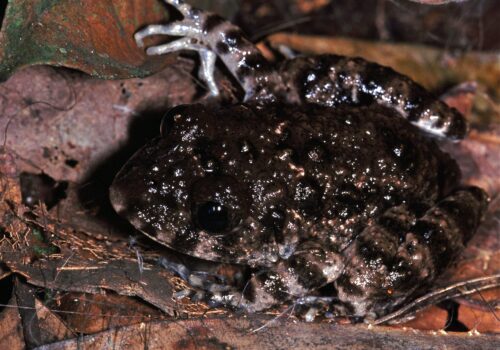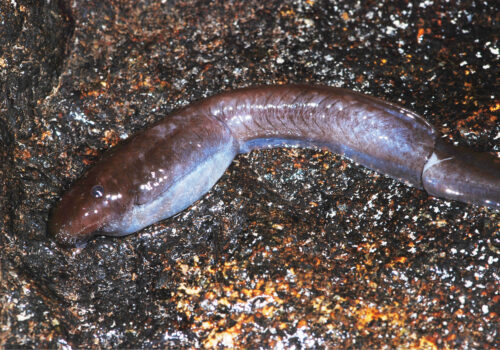- Secrets of the Ethiopian Forests: Exploring the Enigmatic Vannutelli's Tree Frog (Leptopelis vannutellii)
- Taxonomy and Classification of Leptopelis vannutellii
- Natural Habitat: The Ethiopian Highlands As Home
- Physical Characteristics and Adaptations
- Behavior and Life Cycle: An Amphibian Odyssey
- The Ecological Role of Vannutelli's Tree Frog
- Threats and Conservation Status: Protecting Ethiopia's Precious Amphibian
- Cultural and Scientific Insight: Beyond Biological Curiosity
- Conclusion: Guardians of the Highlands
Secrets of the Ethiopian Forests: Exploring the Enigmatic Vannutelli’s Tree Frog (Leptopelis vannutellii)#
In the dense emerald forests tucked within the Ethiopian highlands, hidden among whispers of leaves and weaving tendrils, lives a frog rarely glimpsed but mesmerizingly beautiful—the Vannutelli’s Tree Frog, scientifically known as Leptopelis vannutellii. This elusive amphibian, draped in shades of deep green and ornamented with intricate patterns, is more than just a hidden jewel of Ethiopia’s biodiversity; its existence sheds light on the delicate balance of its forest ecosystems.
Imagine standing near the forest’s edge at dusk, hearing the soft, rhythmic chorus of frogs blending with the rustle of leaves. Among them, hidden out of sight yet a vital voice in the evening choir, is the fascinating creature known simply as Vannutelli’s Tree Frog. Though often overlooked among their more brightly colored tropical cousins, these frogs captivate naturalists and conservationists alike with unique behavioral traits and environmental adaptability.
Taxonomy and Classification of Leptopelis vannutellii#
Scientifically classified under the family Arthroleptidae, Vannutelli’s Tree Frog belongs to the genus Leptopelis, a diverse group commonly referred to as African Tree Frogs. This genus includes frogs significantly varied in coloration, behavior, and ecological niches, underscoring Africa’s remarkable amphibian diversity.
Officially described by Boulenger in 1898, Leptopelis vannutellii has been steadily gaining attention due to its limited geographical range and unique adaptations to Ethiopia’s distinct highland environment. Its closest relatives, including species such as Leptopelis gramineus, share overlapping habitats yet exhibit subtle differences in behavior, vocalizations, and microhabitat preferences, making comparative studies especially intriguing to amphibian researchers.
Natural Habitat: The Ethiopian Highlands As Home#
Residing primarily within Ethiopia’s lush montane forests, Leptopelis vannutellii has carved out a niche distinctive to its biology. The species is most commonly found at altitudes ranging roughly from 1,500 to 3,000 meters above sea level, nestled amidst dense foliage, cool humidity, and frequent mist—conditions perfectly suited to its biology and behaviors.
The forests here are enchanting, defined by towering trees draped in mosses and lichens. Streams trickle between smooth stones, their banks densely carpeted with lush vegetation. Amidst this verdant haven, Vannutelli’s Tree Frog inhabits foliage layers close to water sources, making use of the forest canopy vegetation, shrub layer, and even occasionally forest floor niches, all critical to its survival. Such close ties to forest streams and moisture make habitat integrity vital for this amphibian’s continued thriving.
Throughout the Ethiopian forests where it dwells, the frog’s choice of habitat is dictated not only by moisture but also temperature stability, specific plant types, shelter opportunities from predators, and precise sites for breeding and egg-laying—showing remarkable adaptation and resilience, yet highlighting vulnerabilities caused by habitat change and climate shifts.
Physical Characteristics and Adaptations#
The beauty of Leptopelis vannutellii lies not only in its rarity, but also in a stunning visual appeal. Reaching an average size of around 4 to 6 centimeters in snout-to-vent length, it is modestly sized yet striking. Its slender limbs, adapted for arboreal life, are finely tuned for grasping delicate twigs and broad leaves alike—allowing graceful navigation throughout its densely vegetated home.
The patterns and coloration of this species are especially impressive. With brilliant shades of green to olive, adorned often with brown or greenish-brown irregular markings, its textured skin provides impeccable camouflage among the foliage. Even the eyes, large and forward-facing, possess a metallic sheen that reflects ambient forest light, lending the frog an almost ethereal presence.
Beneath the vibrant exterior lies an expert in camouflage and stealth, adaptations crucial to its existence as both predator and prey. Skin color subtly changes to match seasonal conditions and surroundings, effectively minimizing visibility to predators like birds, snakes, and larger amphibians lurking within the Ethiopian forest canopy.
Behavior and Life Cycle: An Amphibian Odyssey#
Nocturnal Lifestyle and Hunting Behaviors#
By daylight, Leptopelis vannutellii remains hidden, resting quietly beneath leaf surfaces, tree hollows, or mossy crevices. But as darkness descends over the Ethiopian forests, a lively, vocal chorus ensues. Each male frog takes to prominent perches, initiating singular calls characterized by soft, repetitive clicks and gentle chuckles. These calls serve an essential reproductive function, attracting females while marking territories against rival males.
Prey items consist primarily of insects and arthropods found within their canopy habitat, including crickets, moths, spineless larvae, and various beetles. They employ a patient, ambush-style hunting method, utilizing superior sight, stealthy movements, and their sticky tongues for swift prey capture.
Mating, Egg-laying, and Tadpole Development#
The reproductive cycle of these frogs is nothing short of enchanting. After successful courtship illuminated by moonlight and marked by choruses echoing through evenings, breeding pairs seek suitable places near forest streams or standing water where moisture is adequate for developing eggs.
Eggs typically await breeding pools in concealed clusters. Upon hatching, tadpoles enter pools where they feed on algae and remains of vegetation, slowly transforming through an extraordinary metamorphosis. Tadpole stages last from several weeks to months, depending on environmental conditions such as temperature and water levels. This sensitive developmental stage means favorable conditions are vital—in drought, habitat degradation, or pollution scenarios, entire breeding events can fail.
The Ecological Role of Vannutelli’s Tree Frog#
The importance of Leptopelis vannutellii within the Ethiopian forests expands far beyond its enchanting appearance. These amphibians serve as vital bioindicators owing to their permeable skin, sensitivity to pollutants, and close ties to freshwater sources. Declines or disappearances in frog populations often signal detrimental changes in ecosystem health—early warnings invaluable to conservationists and policy-makers alike.
Furthermore, as both predators and prey, these frogs actively regulate insect populations while providing food for larger forest animals. Their presence maintains ecological balance, supporting broader floral and faunal diversity within their delicate highland environment.
Threats and Conservation Status: Protecting Ethiopia’s Precious Amphibian#
Currently classified by the International Union for Conservation of Nature (IUCN) as Least Concern (LC), the Vannutelli’s Tree Frog benefits from relatively stable populations. However, continued deforestation, habitat fragmentation, and growing human populations pose serious threats for future stability, potentially altering their habitats irreversibly.
Climate change further challenges the frogs by altering rainfall patterns, crucial to their reproductive cycles. Recent habitat assessments parallel concerns, emphasizing priority on habitat conservation strategies as effective measures toward protection.
Local conservation initiatives increasingly focus on forest protection, habitat restoration, and broader community engagement in conservation efforts. Awareness campaigns, ecological education, and habitat monitoring programs are essential steps toward safeguarding Ethiopia’s unique amphibian diversity.
Cultural and Scientific Insight: Beyond Biological Curiosity#
Though Leptopelis vannutellii largely remains obscure within broader public awareness, local communities residing around Ethiopian forests have long coexisted with these creatures, often associating amphibians with rainfall, regeneration, and ecological renewal. These quiet guardians acting as messengers of environmental health have started becoming focal points in conservation education and community awareness projects.
From the scientific viewpoint, investigating their sensitivity to climatic changes and pollutants offers insights into environmental indicators relevant beyond forests and amphibian populations alone, contributing invaluable clues toward preserving human environmental well-being too.
Conclusion: Guardians of the Highlands#
Embracing Ethiopia’s lush montane forests, Leptopelis vannutellii captivates us not only by its stunning beauty and intricate behaviors, but by its vital ecological significance. Protecting this exceptional amphibian ensures preservation of biodiversity, ecological integrity, and environmental sustainability for Ethiopia’s natural heritage.
Today, Vannutelli’s Tree Frogs quietly sing their enchanting songs under moonlit canopies—a gentle reminder of fragility and natural richness, beckoning each of us toward commitment, responsibility, and hope-filled action for their enduring survival.











